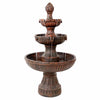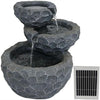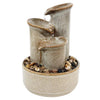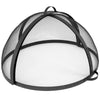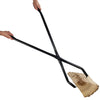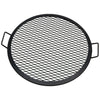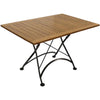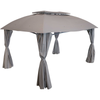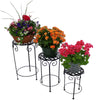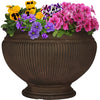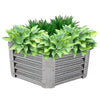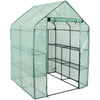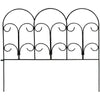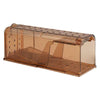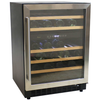Growing plants in your home can lead to a number of benefits.
Not only will the bright blooms and vibrant leaves add color and variety to your décor, but according to The Spruce, indoor plants can also help purify the air, regulate the temperature in your home, improve your mood, and help muffle outdoor noise.
In order to successfully grow beautiful plants, you need to give them plenty of care. Follow these essential tips to learn how to care for indoor plants.

9 Tips to Care for Houseplants
-
Choose a Low Maintenance Indoor Plant
If you’re new to indoor gardening, it’s best to choose a resistant type of plant that does not require a lot of attention in order to grow and thrive.
Good Housekeeping recommends aloe, peace lilies, philodendrons, and spider plants as easy-to-maintain options for beginners.
-
When You Should Water Your Indoor Plants
How often should you water indoor plants? It depends on the type of plant and its growing conditions.
To determine when your houseplant needs water, poke your finger into the soil up to the second knuckle. If the soil feels damp, the plant does not need to be watered, if it feels dry add a bit of room temperature water to the soil.
-
Mist Your Houseplants to Boost Humidity
Plants typically thrive in areas with humidity levels of 80% and higher (this is especially true for tropical plants).
Misting houseplants with a spray bottle filled with distilled water is a simple way to increase the humidity around the plant. You can also add a tabletop fountain or humidifier to the room.
-
Give Your Indoor Plant Enough Sunlight
Generally indoor plants require between 12 and 16 hours of light per day. Place your houseplant in a well-lit room that receives plenty of indirect sunlight.
-
Select a Pot with Good Drainage
Selecting the right planter for your indoor plant ensures that it has room to grow and helps prevent overwatering. Look for a planter that has drainage holes so your plant is not constantly sitting in water.

-
Keep Your Houseplant in One Spot
After you have found a place with the ideal temperature and sunlight conditions for your indoor plant, try to avoid moving it.
Once a houseplant acclimates to a specific area moving it away from that place can cause the plant to go into shock.
-
Prune Your Plant When Necessary
Even houseplants require a bit of grooming now and again.
Use a pair of pruning shears to clip away any dead leaves and flowers or damaged branches. This will give your plant a pleasant shape and ensure that they do not drain away any valuable energy from the rest of the plant.

-
Use High-Quality Fertilizer
Indoor plants require a mix of nutrients to stay healthy and strong.
Adding a balanced fertilizer that contains nitrogen, phosphorous, and potassium to the potting soil will help improve the health of the indoor plant. For flowering plants, choose a fertilizer that is high in potassium while foliage plants need a fertilizer that is high in nitrogen.
-
Inspect Your Pot & Repot if Needed
Eventually, your indoor plant will outgrow its pot and require a new one with more space for its roots.
If you see roots poking out of the drainage holes or the plant seems to be drying out faster than normal, it is time to move it to a bigger planter. Choose a planter that is slightly larger than its current pot (a pot that is too large can lead to root rot because it holds too much water).
Regularly Inspect Your Indoor Plant for Problems
In addition to regular care, keep an eye out for any changes in your houseplant like misshaped leaves, spotting or color changing. These can be signs of disease or insect damage.
For additional tips on how to care for houseplants, check out this article to learn 7 Natural Ways to Keep Bugs Off Plants.
Houseplants are a simple way to bring the beauty of nature into your home. Plus, they provide a number of surprising health benefits. Following these simple steps will help ensure that both you and your plants are happy and healthy.
